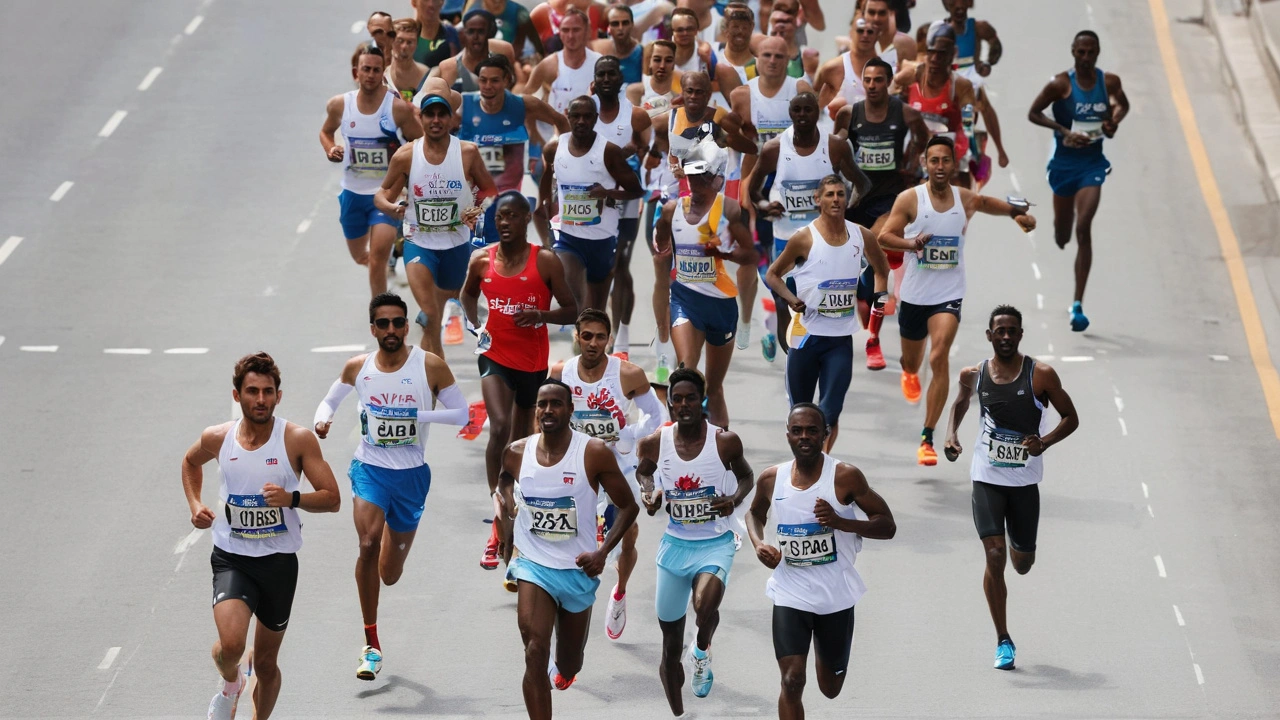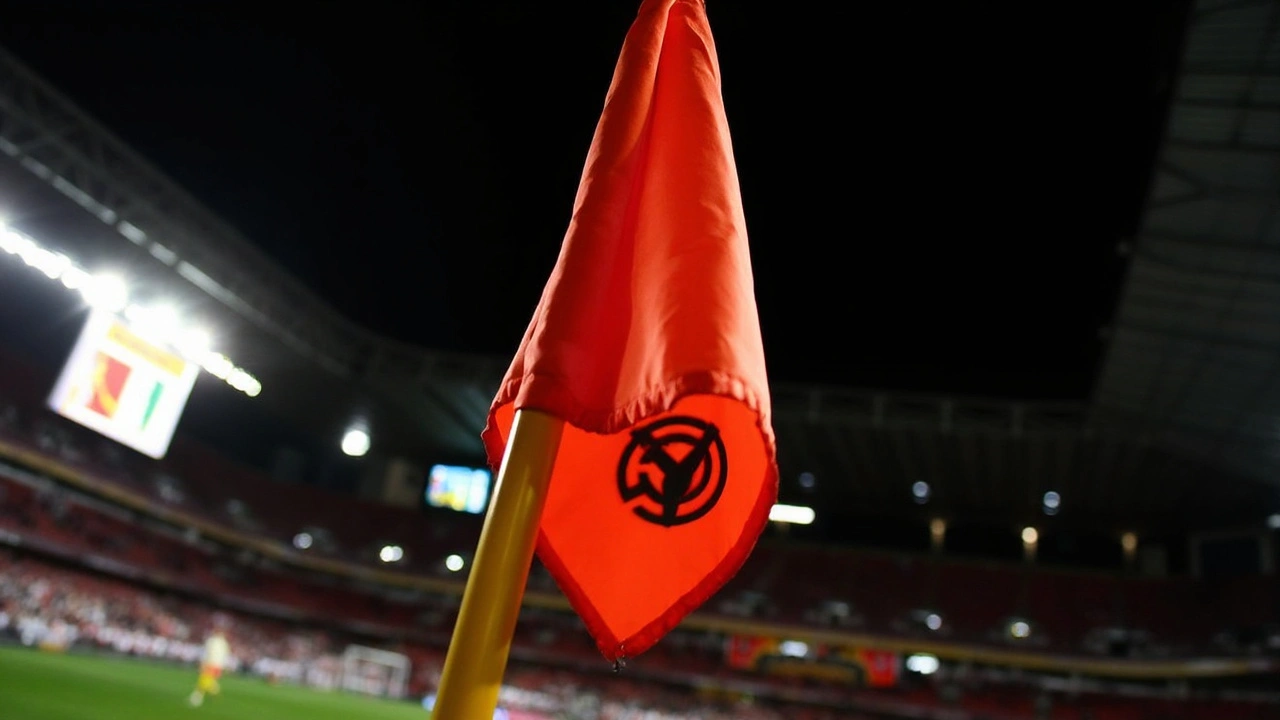Men's Marathon at the 2024 Paris Olympics: A Comprehensive Guide
Scheduled for August 10, 2024, the men's marathon at the Paris Olympics promises to be a thrilling spectacle. This event, traditionally held towards the end of the Games, will feature a start list of 160 athletes hailing from various corners of the globe. Prominent among the participants is Kenya's Eliud Kipchoge, the two-time Olympic champion who aims to defend his title once again, and Ethiopia's formidable Kenenisa Bekele. The race is also historically significant, highlighting Paris's enchanting landmarks while presenting one of the toughest challenges to the athletes.
The route for the marathon, carefully curated to blend difficulty with beauty, begins at the iconic Hôtel de Ville. From there, runners will traverse through nine districts within the Île-de-France region, encapsulating the essence of Parisian culture and history. Noteworthy landmarks along the route include the Palais Garnier, Place Vendôme, the Louvre, and the Trocadéro, painting a picturesque yet demanding journey for every competitor. Furthermore, the route stretches to the grandeur of Versailles before looping back to central Paris, testing the athletes’ endurance and grit to their absolute limits.
Designing the route, the organizers have ensured it embodies the tangible aspects of a marathon that challenge every athlete to their core. The course includes an arduous 436-meter climb and a 438-meter descent, with steep inclines reaching a maximum gradient of 13.5%. Such parameters add an enormous level of physical difficulty, making the marathon a true testament to the athletes' stamina, strategy, and mental fortitude.
Top Contenders and Rivalries
Among the star-studded cast of marathoners, Eliud Kipchoge is undoubtedly a name that stands out. Kipchoge, often hailed as the greatest marathoner of all time, has repeatedly shattered records and defied expectations. With successive Olympic victories in Rio and Tokyo, his quest for a third consecutive gold sets the stage for an exhilarating race. Standing in his path is Kenenisa Bekele, another titan of long-distance running. A seasoned athlete with numerous accolades, Bekele's presence infuses a competitive edge into the marathon. The two champions’ anticipated face-off will be one for the ages, their last encounter dating back to the 2018 London Marathon.
Adding to the intrigue, various countries have mobilized their best runners, each bringing unique strengths and strategies to the fore. Thirteen nations will be represented by three top-tier athletes, while eight other countries will field two competitors each, adding depth and diversity to the field. Each athlete, armed with rigorous training and strategy, dreams of leaving their indelible mark on Olympic history.
Broadcast and Viewing Details
For those eagerly waiting to watch this electrifying event, the marathon will commence at 2 a.m. ET. Fans can tune in live via NBC, which will cover the event extensively. For those preferring digital access, Peacock and FuboTV offer streaming options, bringing the event to a global audience. The accessibility ensures that fans worldwide can cheer for their favorite athletes without missing a moment of the action.
As an added treat for marathon enthusiasts, the women's marathon will take place on the following day, August 11, 2024. Similarly, it will be broadcast on NBC and available for streaming on Peacock and FuboTV, providing back-to-back days of marathon excellence.
Key Elements of the Marathon Route
The intricacies of the marathon route are designed not only to test physical endurance but also to engage the runners in the cultural tapestry of Paris. Starting from Hôtel de Ville, the runners will navigate through historical and picturesque sites. The route composition reveals the challenges lying ahead: a seamless blend of narrow streets, broad avenues, elevations, and descents. This elaborate route navigation through notable sites like the Palais Garnier and the Louvre is strategically developed to test the athletes' pacing and fortitude.
The climb and descent dimensions of 436m and 438m respectively imply substantial elevation changes, demanding strategic energy conservation and calculated effort from the runners. The 13.5% maximum gradient, in particular, introduces an element of strategic acumen, requiring optimal hill-running techniques and effective energy preservation across flat and inclined sections alike.
Strategic Considerations for Competitors
The dual challenges of terrain and strategy factor significantly into how the marathon unfolds. Athletes will need to consider their racing strategies meticulously, particularly given the undulating terrain and the protracted climb and descent sections. Pacing strategies play a pivotal role, where early energy banking or conservative pacing could influence the outcome significantly. With historical sites as backdrops, the psychological aspects of maintaining focus amidst Paris's grandeur also come into play. The mind's command over the body during these taxing conditions will be paramount.
Additionally, dynamic weather conditions prevalent in Paris around August potentially add another layer of complexity. Athletes are likely to face fluctuations in temperature, necessitating adaptive strategies to maintain optimum performance levels. Proper hydration, acclimatization, and temperature regulation become indispensable elements of the marathoners' preparation and in-race adjustments.
Historic Context and Legacy
Paris, a city synonymous with historical richness, presents a fitting stage for the marathon's grand narrative. The alignment of the marathon route with significant landmarks roots the event deeply in Paris's history, offering both athletes and viewers a glimpse into the city's cultural essence. The Hôtel de Ville’s historical grandeur sets a resonant starting point, with the marathon embedding itself in the collective memory of the Games each time a runner passes a notable landmark.
The historic narratives of venues such as Palais Garnier and the Louvre intersperse athletic achievement with cultural homage, reinforcing the marathon's role as more than just a race—it becomes a poignant journey through time. These nuances offer the marathon a storied elegance, blending the present-day athletic fervor with timeless historical reverence.
Future Prospects and Evolution
Looking ahead, the Paris marathon route for the 2024 Olympics encapsulates a forward-thinking approach to athletic competitions within urban landscapes. By incorporating historic and scenic elements, it paves the way for future marathons to integrate cultural touchstones with sheer athleticism. This model could inspire subsequent marathon events globally, fostering a harmonized celebration of global sporting spirit and local cultural heritage.
The novel challenges presented by the Paris route, particularly the substantial elevation changes, could redefine training regimens and strategies for aspiring marathoners. As athletes and coaches analyze the outcomes and adapt, future events may witness refined techniques and improved performances, elevating the marathon sport further.
The eagerly awaited men’s marathon at the 2024 Paris Olympics thus stands as a beacon of athletic prowess, strategic expertise, cultural celebration, and historic homage. An event etched into the annals of Olympic history, it heralds an unparalleled confluence of sport and spectacle, captivating audiences from around the world. Be it the grueling battle between Kipchoge and Bekele, the evocative journey through Parisian landmarks, or the deft strategic maneuvers of the runners, the marathon promises to be an edifying saga of resilience and triumph.





